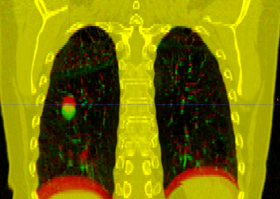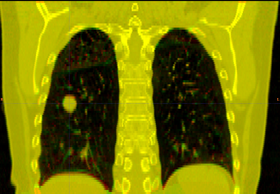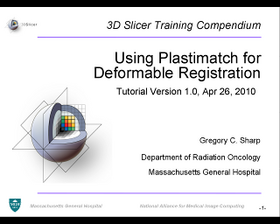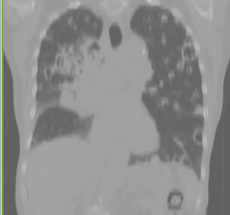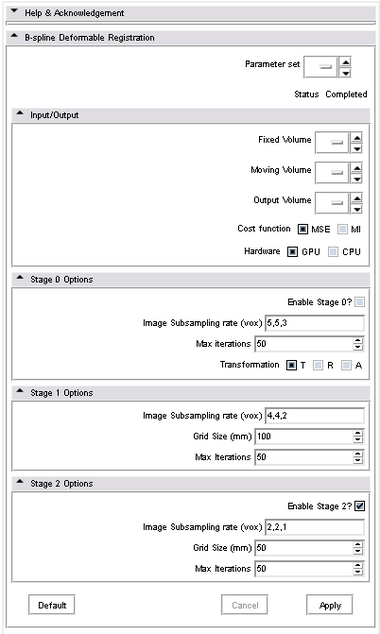Documentation/4.1/Modules/PlmBSplineDeformableRegistration
From Slicer Wiki
Home < Documentation < 4.1 < Modules < PlmBSplineDeformableRegistration
Introduction and Acknowledgements
|
Extension: Plastimatch
| |||||
|
Module Description
This is the plastimatch automatic (B-spline) deformable image registration module. It includes a multi-stage, multi-resolution pipeline, as well as multicore and GPU acceleration. Compared to other B-spline methods in 3d slicer, the plastimatch registration method might offer:
- superior accuracy for CT-CT (or CT-CBCT) registration
- faster results for MSE registration
However, to date there have been no rigorous comparisons of the various 3D Slicer registration methods.
Examples of how this module is being used:
- Intra-subject registration for adaptive radiotherapy
- Inter-subject registration for automatic segmentation
Use Cases
Tutorials
Panels and their use
|
Similar Modules
- Plastimatch DICOM-RT import
- Plastimatch DICOM-RT export
- Plastimatch Dose Comparison
- Plastimatch Dose Volume Histogram
- Plastimatch LANDWARP Landmark
- Plastimatch Synthetic Image Generation
- Plastimatch Threshold in a box
- Plastimatch XFORMWARP
References
More information on www.plastimatch.org
Information for Developers
| Section under construction. |


